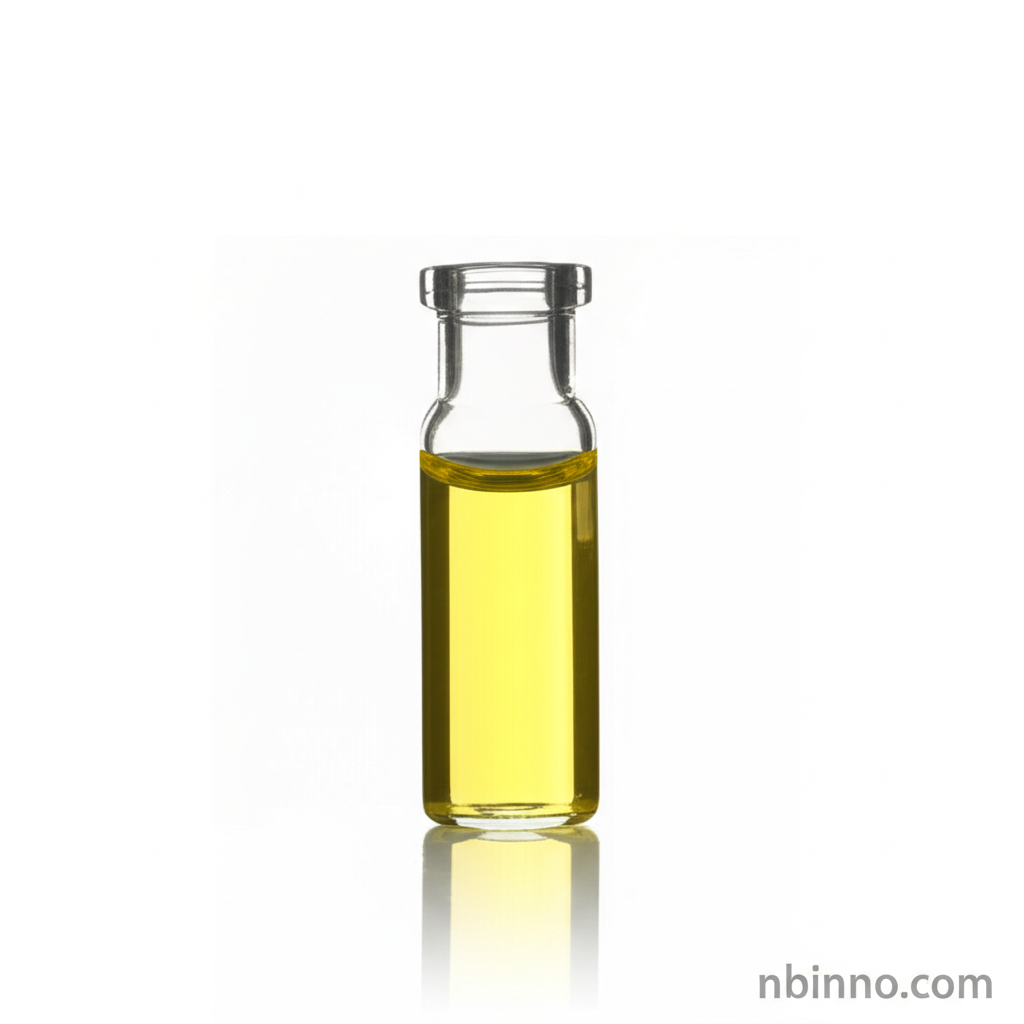Tributylphosphine (CAS 998-40-3): A Versatile Organophosphorus Compound for Synthesis and Catalysis
Discover the multifaceted applications of this vital organophosphorus compound in catalysis, organic synthesis, and advanced materials.
Get a Quote & SampleProduct Core Value

Tributylphosphine
Tributylphosphine (CAS 998-40-3) is an essential organophosphorus compound with a characteristic oily liquid appearance and a strong, unpleasant odor. Its chemical structure, P(CH₂CH₂CH₂CH₃)₃, endows it with unique properties that make it highly valuable across various scientific and industrial domains. It serves as a critical ligand in transition metal catalysis, a potent nucleophilic organocatalyst, and a key precursor in the synthesis of advanced nanomaterials. Its reactivity, particularly with oxygen, necessitates careful handling under inert atmospheres.
- Explore the essential role of Tributylphosphine in organic synthesis, particularly its use in cross-coupling reactions such as Suzuki-Miyaura and Buchwald-Hartwig couplings. Learn how PBu3 ligands stabilize transition metal catalysts, facilitating the formation of complex carbon-carbon and carbon-heteroatom bonds.
- Understand the catalytic capabilities of Tributylphosphine as a nucleophilic organocatalyst. Discover its involvement in Michael additions, ring-opening reactions, and other transformations where it activates substrates through zwitterionic intermediates, enabling base-free catalysis.
- Investigate the applications of Tributylphosphine in advanced materials science, including its use as a precursor and stabilizing agent in the synthesis of quantum dots, semiconductor nanocrystals, and functional polymers. Learn how its properties contribute to the development of luminescent materials and recyclable polymer systems.
- Delve into the future directions of research involving Tributylphosphine, such as its integration into flow chemistry for safer and more efficient reactions, the development of immobilized and recoverable catalysts for improved sustainability, and the exploration of bio-inspired alternatives for greener chemical processes.
Advantages Provided by Tributylphosphine
Versatile Ligand in Catalysis
Tributylphosphine's unique steric and electronic properties make it a highly effective ligand for a wide range of transition metal-catalyzed reactions. Its ability to stabilize metal centers in low oxidation states enhances catalytic activity and selectivity in processes like Suzuki-Miyaura and Buchwald-Hartwig couplings.
Potent Organocatalyst
As a nucleophilic organocatalyst, Tributylphosphine can activate substrates through zwitterionic intermediates, enabling base-free Michael additions and other carbon-carbon bond-forming reactions. This catalytic capability simplifies reaction conditions and broadens synthetic possibilities.
Key in Nanomaterial Synthesis
Tributylphosphine serves as a crucial precursor and solvent in the synthesis of advanced nanomaterials, including quantum dots and semiconductor nanocrystals. Its role in controlling particle size and morphology is vital for developing luminescent materials and advanced electronic components.
Key Applications
Transition Metal Catalysis
Utilized as a ligand in palladium-catalyzed cross-coupling reactions such as Suzuki-Miyaura and Buchwald-Hartwig couplings, facilitating the formation of C-C and C-N bonds. Its role in these reactions is crucial for synthesizing complex organic molecules.
Organocatalysis
Acts as a nucleophilic organocatalyst for Michael additions, ring-opening reactions, and annulations, promoting carbon-carbon bond formation through zwitterionic intermediates and enabling base-free reaction pathways.
Nanomaterial Synthesis
Serves as a precursor and solvent in the synthesis of quantum dots and semiconductor nanocrystals (e.g., PbSe, CdSe), influencing particle size, stability, and optical properties for applications in optoelectronics.
Polymer Science
Used in the development of functional polymers, including as a catalyst in thermoset formation and as an agent for the chemical-induced repair, adhesion, and recycling of polysulfide polymers through S-S metathesis.
